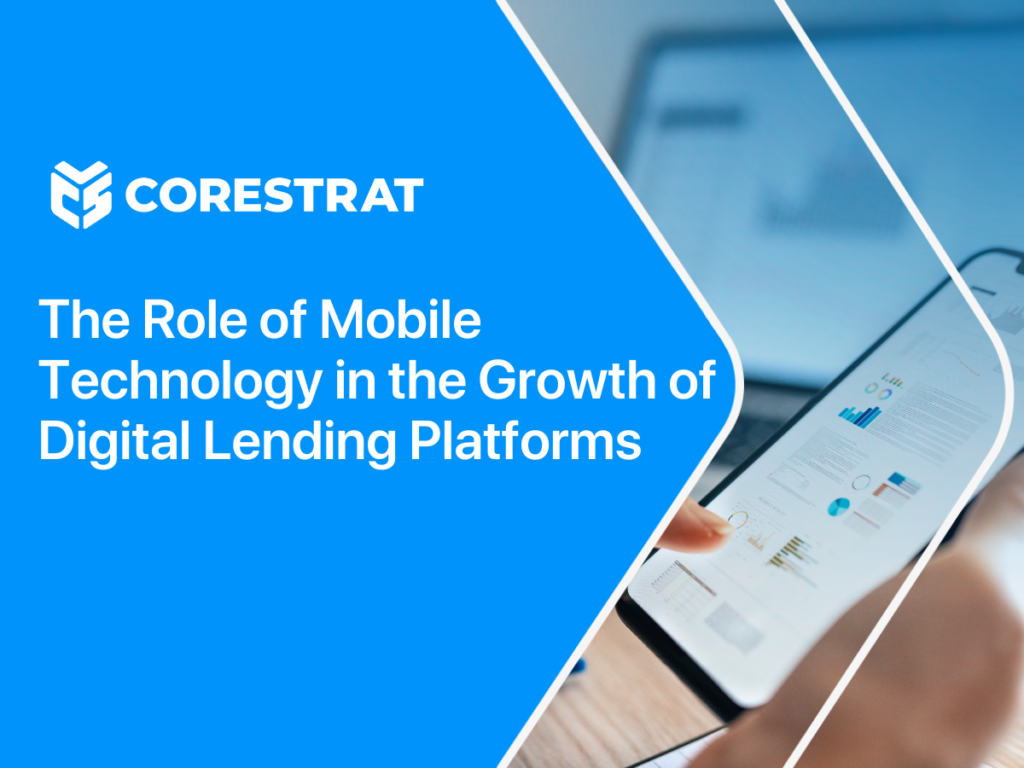In recent years, the financial services industry has undergone a profound transformation, driven by advancements in digital technology. Among the many factors propelling this shift, mobile technology stands out as a key enabler, particularly in the growth of digital lending platforms. With the ubiquity of smartphones and internet access, lenders are increasingly leveraging mobile solutions to reach a broader audience, streamline operations, and enhance the borrower experience. This blog explores the role of mobile technology in the rise of digital loan origination systems.
The Mobile Revolution: A Gateway to Digital Lending
The explosion of mobile phone usage globally has redefined how financial services are accessed and delivered. According to GSMA’s Mobile Economy 2023 report, there are 5.56 billion unique mobile subscribers worldwide, accounting for 69.1% of the global population. Moreover, 4.4 billion people, or 55% of the global population, are mobile internet users. These statistics highlight the immense potential for mobile-based financial solutions, especially in emerging markets where traditional banking infrastructure may be lacking.
Lenders are using this ecosystem to bypass geographical limitations and physical branch networks and serve a larger, more diverse customer base. Digital lending platforms can leverage mobile apps and mobile-optimised websites to provide instant access to credit services, significantly reducing the time and effort required to apply for a loan.
Expanding Financial Inclusion Through Mobile Lending
One of the most significant contributions of mobile technology to the digital lending automation ecosystem is its role in promoting financial inclusion. In many developing countries, large segments of the population remain unbanked or underbanked, lacking access to formal financial services. However, mobile technology is changing this dynamic by enabling access to financial services in regions with limited or non-existent traditional banking infrastructure.
Mobile-based digital lending platforms have emerged as a lifeline for these underserved populations. For example, in Kenya, M-Pesa, a mobile money service, has played a crucial role in expanding financial access. Leveraging M-Pesa’s mobile money network, platforms like M-Shwari and KCB M-Pesa offer microloans to individuals who might otherwise be excluded from formal credit markets.
Streamlining the Lending Process with Mobile Apps
The traditional lending process is often cumbersome, requiring extensive paperwork, multiple visits to physical branches, and lengthy approval timelines. Mobile technology has revolutionised this process by digitising every step of the loan lifecycle—from application and verification to disbursement and repayment. Mobile lending apps allow borrowers to complete the entire loan process from their smartphones, significantly reducing friction and improving the borrower experience.
For instance, platforms like India’s Lendingkart, OxyLoans and LoanTap allow users to apply for personal loans directly through mobile apps, with minimal documentation and instant approval. All these apps use advanced algorithms and data analytics for credit risk management in real time, allowing borrowers to receive loan approvals within minutes. In addition to simplifying the loan application process, mobile technology enables real-time communication between lenders and borrowers. Automated notifications, reminders, and updates are delivered directly to the borrower’s phone, keeping them informed throughout the loan process and reducing the likelihood of missed payments.
Enhancing Credit Assessment and Risk Management
One of the challenges in digital lending is accurate credit risk assessment of borrowers, particularly those with limited or no credit history. Traditional credit scoring models often rely on historical financial data, which may not be available for many mobile-based borrowers, especially in emerging markets. Mobile technology, however, provides alternative data sources that can be used to assess credit risk more effectively.
Digital lending platforms are increasingly utilising smartphone data, such as spending habits, app usage patterns, and social media activity, to build more comprehensive credit profiles. In addition to alternative data, mobile technology enables the integration of machine learning and artificial intelligence (AI) into lending platforms. These technologies help lenders identify patterns, predict borrower behaviour, and assess risk more accurately, thereby reducing default rates.
Improving Loan Disbursement and Repayment Processes
Mobile technology not only facilitates loan applications and credit assessment but also streamlines loan disbursement and repayment. Borrowers can receive funds directly into their bank accounts within minutes of loan approval. This immediacy is particularly valuable in times of emergency or when funds are needed for time-sensitive expenses.
Similarly, mobile platforms simplify loan repayment by offering multiple payment options, including online banking and automatic deductions. This flexibility helps borrowers repay loans on time, reducing default rates and improving overall financial health.
Conclusion
Mobile technology has reshaped the digital lending landscape, enabling lenders to reach previously underserved populations, streamline operations, and improve risk management. By leveraging mobile apps, alternative data sources, and advanced analytics, digital lending platforms have democratised access to credit and contributed to financial inclusion on a global scale. As mobile technology continues to advance, its role in the growth of digital lending platforms will only become more pronounced, unlocking new opportunities for innovation and expansion.
Corestrat’s Digital Lending Automation (DLA) is a lending platform designed to operate smoothly on mobile devices. It allows users to complete the entire loan process, from submitting the application to receiving the disbursed funds in their bank accounts, all via their smartphones, minimising the need for bank visits.



